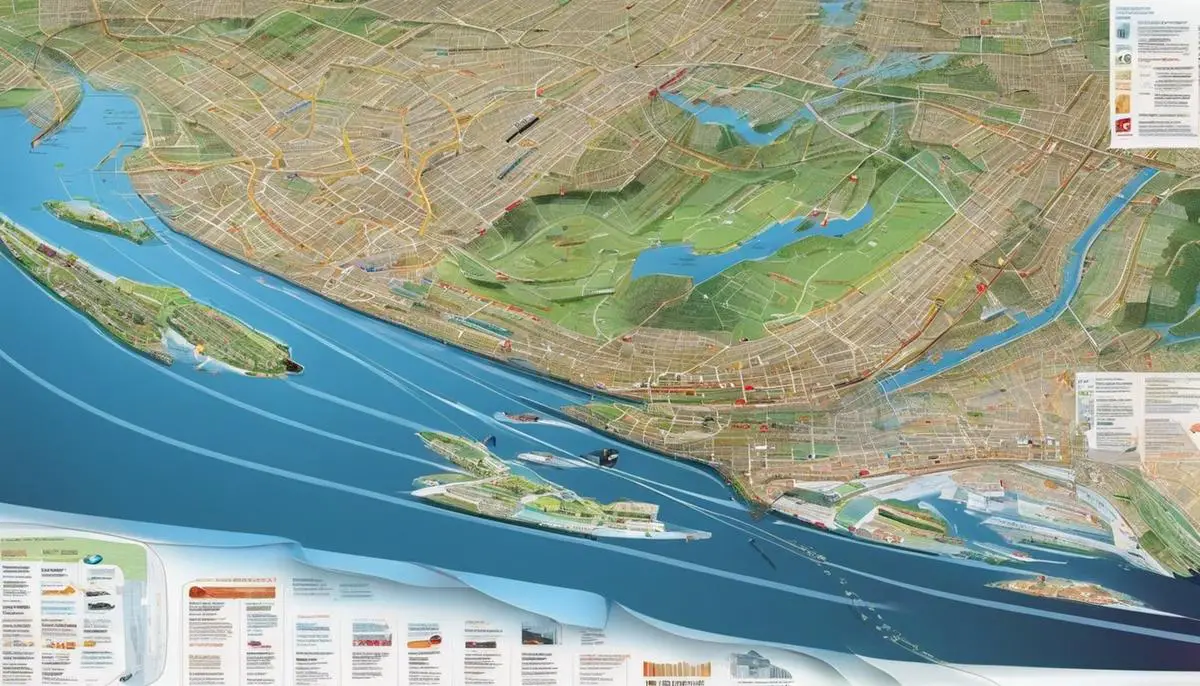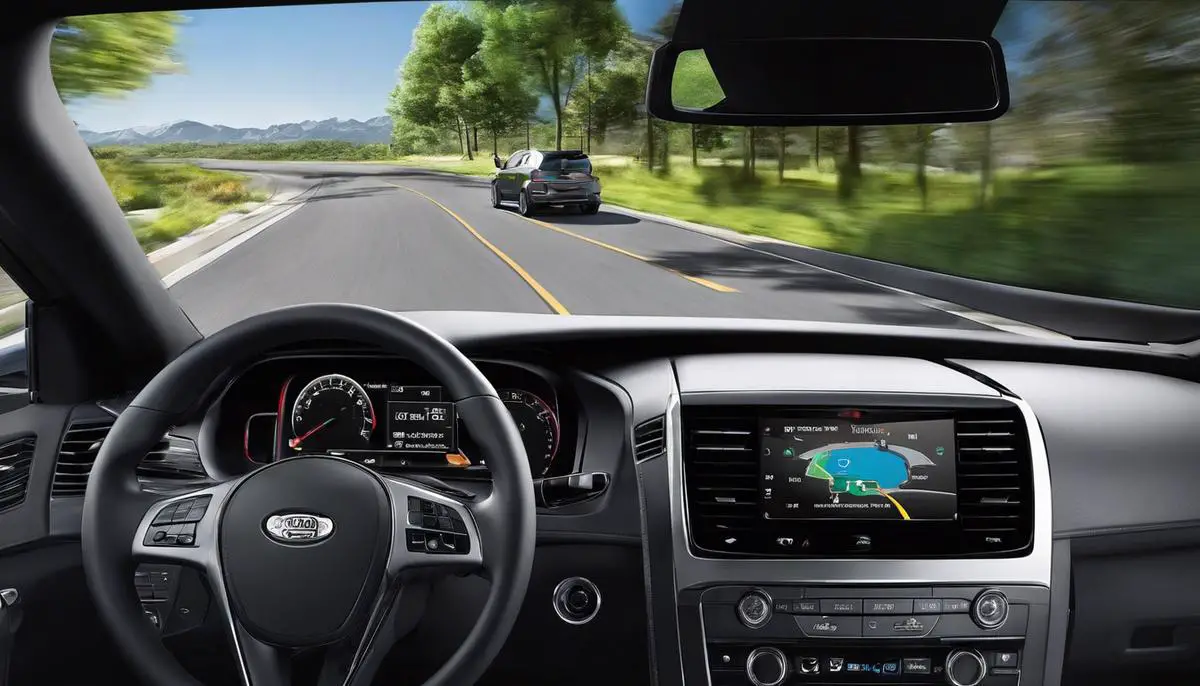AI’s Role in the Future of Car Navigation Systems
In a world where technology in transportation is continuously evolving, advanced car navigation systems have become a symbol of innovation, integration, and intelligent planning. Over the years, static, printed maps have given way to the advent of Global Positioning Systems (GPS). We’ve witnessed significant leaps in technological advancements, such as real-time traffic data, digital mapping, and interactive voice feedback, which have revolutionized the way we plan our commutes and travel. As we dive deeper into the complexities of these systems, we unravel the significant influence that Artificial Intelligence (AI) has had on making navigation more fluid, dynamic, and adaptive.
Evolution of Car Navigation Systems
The Evolution of Car Navigation Systems: From Maps to Machines
Car navigation systems have transformed dramatically, especially over the past two decades. Remember those long, torturous car rides with a well-worn, unwieldy paper map sprawled across the dashboard? Those days are fortunately relegated to the recesses of our shared vehicular history. Thanks to technology, we now have a range of advanced, user-friendly, and creative navigation systems at our fingertips.
The first wave of car navigation systems came to prominence in the 1990s. Systems like GuideStar and Travelpilot leveraged CD-ROMs for their database. They were clunky and spoke in monotonous robotic voices, but the idea of having a machine navigate made people feel like they were in an episode of the “Jetsons”.
The 2000s witnessed the transition to GPS-based systems, drastically altering the landscape of automobile navigation. GPS, or Global Positioning System, operates by connecting with a network of 24 satellites orbiting the earth. This connection allows the system to accurately pinpoint your geographical location and, in return, guide you to your destination. This was a game-changer for travelers and commuters alike.
The rise of smartphones and mobile technology in the late 2000s and 2010s brought another disruptive change with the inclusion of navigation applications. The most notable among them are Google Maps and Apple Maps. They revolutionized car navigation systems by utilizing the internet for real-time updates on traffic and route optimization. The use of touch screens and voice guidance also became standard features.
The latest development in car navigation systems blends artificial intelligence (AI) with augmented reality (AR). AI-powered voice assistants provide interactive engagement, learning user routines and preferences for better suggested routes. AR superimposes directions over a real-world view of the road ahead, leading to intuitive and safer navigation experiences.
There’s an impending wave of self-driving cars where navigation systems will go beyond just providing turn-by-turn instructions. Using a blend of radar, lidar, and high-accuracy GPS, these cars will not only determine the best routes but maneuver through them automatically.
The journey from paper maps to AI-AR hybrid systems embodies the unstoppable progress powered by technology. Here’s to an exciting future for car navigation systems where we’ll see even more innovation and ingenuity! Yet, despite these enticing changes, one question remains: will these advancements ultimately make us better drivers, or further feed our reliance on technology? Only time, and technology itself, will tell.

Integration of AI in Navigation Systems
Following the revolutionary introduction of the Global Positioning System (GPS) and later, the rise of smartphone-enabled navigation with Google Maps and Apple Maps, the automotive industry stands witness to its most significant upgrade yet – the integration of artificial intelligence (AI) in car navigation systems.
AI is now breathing new life into these systems, empowering them to go beyond just providing directions from point A to B. From predictive navigation to real-time rerouting based on real-time traffic data, AI is enabling smarter and more accurate solutions for in-car navigation.
One key feature that AI facilitates is predictive destination entry. Here’s how it works: The AI system studies your daily routine, the places you visit and when, and can anticipate your destination even before you enter it. This saves you time and effort, and more importantly, allows for a hands-off experience that enhances driving safety.
AI-enhanced navigation systems are drawing on real-time traffic data to give more accurate traffic conditions and predict expected delays. They don’t just pool data from satellites. They source information from fellow drivers using the same navigation system, providing insight into up-to-the-minute road conditions. If there’s a traffic build-up or a road closure, the AI can automatically suggest alternative routes to minimize travel time.
Beyond just roads and highways, AI is transforming parking too. Ever circled around a busy downtown area looking for a parking spot? Well, with AI, your car navigation system can find nearby parking spots for you. It can also calculate the walking distance from the parking spot to your ultimate destination – all in real time.
AI is contributing heavily to the development of autonomous driving technologies as well. Using advanced sensors and cameras, the navigation system can learn to recognize obstacles and avoid them, follow traffic signals, and even handle parallel parking.
Finally, combining AI with Augmented Reality (AR) is creating a navigation experience unlike any other. For instance, systems can overlay navigation directions, obstacle warnings, and other indicators directly onto the car’s windshield. This means that drivers no longer need to shift their gaze to a screen; the information they require is projected in their natural line of sight.
However, this technological leap doesn’t come without its fair share of apprehensions. The reliance on AI-aided navigation chips away at traditional navigational skills. There’s also the argument surrounding data privacy, the huge amount of personal information these systems collect could potentially be misused.
Still, the positives far outweigh the negatives. As the technology matures, and issues of data privacy and security are effectively addressed, AI integrated car navigation systems are undeniably the future. We stand at the cusp of a future where navigation means so much more than just getting us from point A to B. With AI, navigation is evolving towards a completely connected, fully integrated, and increasingly predictive driving experience. The possibilities this opens up for the evolution of transportation are exciting and limitless.

Impact of AI on User Experience
Integrating artificial intelligence (AI) into car navigation systems represents a significant upgrade. It offers a multitude of possibilities, enhancing user experience with features that push the boundaries of technological innovation.
One of the most prominently featured AI additions to navigation systems is predictive destination entry. When beginning a journey, most people know where they’re headed and simply input their destination into the navigation system. Today, artificial intelligence is taking on that task. Designed to anticipate the needs of the user, AI analyses usage patterns and daily routines to offer suggested destinations. For example, the system could automatically suggest your work address on weekday mornings. Beyond convenience, this feature can save critical seconds, especially when in a rush.
Real-time traffic data and rerouting is another top-tier feature AI brings to the table in navigating roads today. Traditional GPS systems direct drivers along a predetermined route, regardless of live road conditions. AI seamlessly integrates evolving traffic data into its navigational tactics. By analyzing real-time traffic patterns, AI can dynamically adjust routes during your trip, providing efficient alternative paths to avoid congestion and saving users valuable time.
Parking can often challenge even the most experienced of drivers. AI-enhanced car navigation systems have now expanded their scope to include parking assistance. AI algorithms assess available park spaces, even guiding drivers to find and utilize these spots. It’s like having a co-driver in the front seat, advocating for smarter parking choices.
AI’s undeniable influence has not stopped at navigation; it’s also making strides in autonomous driving technologies. Autonomous cars, while still in their infancy, rely heavily on AI to interpret the surrounding environment and make driving decisions in real-time. For navigation, the AI systems not only plot the course but also analyze and predict the behaviors of other road users.
Augmented Reality (AR), combined with AI, embroiders an extra layer of data visualization to car navigation. AR overlays intuitive graphics onto the real world, which can then be viewed through the windshield or a dedicated display. Essentially, the world outside becomes the navigation screen itself, enhancing user understanding of the road layout ahead.
However, on this road to automation, concerns are cropping up about the over-reliance on AI-aided navigation. Critics question the level of trust placed in AI when it comes to safety. Skepticism lingers over how closely we should follow AI’s advice without applying our human logic and intuition. Others worry about privacy, questioning how predictive systems gather and store personal data.
Despite these concerns, the future thrusts forward undeterred—AI integration in car navigation systems isn’t just the future, it’s the present. With the promise of safer, more efficient, and easier road travel, AI-driven navigation looks set to further revolutionize our relationship with transportation. As the technology matures, it’s apparent that the benefits vastly outweigh the apprehensions. Drivers, tech enthusiasts, and road-trippers alike get ready—AI is taking the wheel, and the ride promises to be thrilling.

Future Trends in AI-Powered Car Navigation
Artificial intelligence is the latest wave in the evolving landscape of car navigation. It takes us leaps and bounds beyond the GPS and mapping apps of yore, promising to revolutionize our driving experiences immeasurably.
Foremost among the benefits offered by AI is predictive destination entry. This entails AI systems learning the most frequent routes of their users. Over time, the system can accurately predict the destination of the user right from the start of their trip, saving both time and effort.
Real-time traffic data and rerouting embody another crucial advantage. Powered by AI, navigation systems are now capable of providing up-to-the-minute traffic data. This allows for efficient rerouting around traffic congestion, unforeseen roadblocks, or accidents, ensuring you get to your destination promptly and trouble-free.
Another standout feature enabled by AI is parking assistance. These cutting-edge solutions take over the entire parking process, guiding the vehicle seamlessly into tight parking spots and eliminating the conventional hassles associated with parking.
A significant stride made possible by AI incorporation is autonomous driving technologies. This remarkable development is abruptly turning the long-standing vision of self-driving vehicles into a reality, all thanks to intelligent navigation systems.
Simultaneously, Augmented Reality (AR) plays a pivotal role in AI-enabled navigation. By overlaying digital information onto the real world, AR navigational systems provide detailed and precise directions. This synchronization of virtual and real-world elements presents an intuitive, visually appealing, and enhanced driving experience.
Undeniably, the rapid adoption of AI poses valid concerns. The most sizable is the fear of over-reliance. Drivers risk becoming overly dependent on the technology, potentially taking a toll on their navigation skills. Privacy issues are also at the forefront, as the technology amasses a wealth of user data, warranting measures to ensure data protection and privacy.
Nonetheless, the upsides of AI-driven navigation are manifold. Quick, efficient, and technologically superior, these systems turn the act of driving into a relaxed, virtually effortless experience.
As we look to the future, we can see the blueprint for a world where AI integration is intrinsic to car navigation systems. A world where drives are completely hands-off, the navigation is predictions-based, and AI technology is the key that drives advancements in the transport industry. The scope of AI in our driving lives is expansive, redefining not just the way we travel but also the entire landscape of transportation.

Indeed, the integration of AI into car navigation systems represents not only a technological triumph but also a leap in the user experience. It provides ease of use and personalized experiences for the end-user in ways previously unimaginable. It opens up new avenues for technological advancements, such as smart technology synchronization, autonomous vehicle technology, and predictive capabilities catering to personal preferences. As we move into the future, these trends promise a personalized, safe, and efficient driving experience. However, it is crucial to also consider and address the potential challenges, such as data privacy and policy adaptation, to facilitate a smooth transition into this future.
